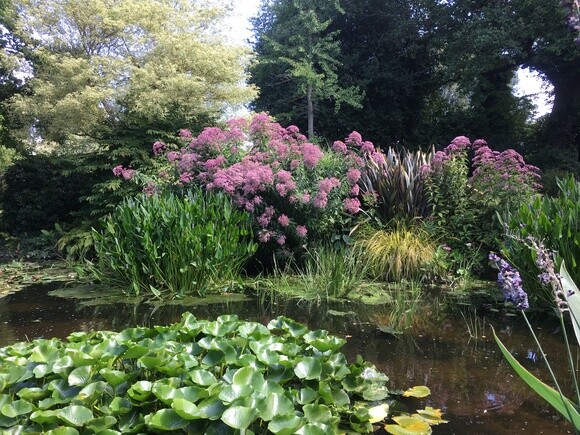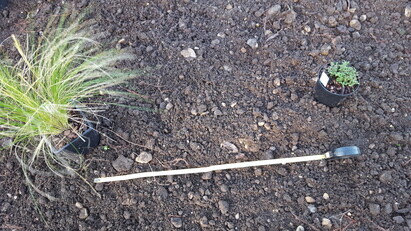Find out what the garden and propagation teams have been up to this week.

Planting successfully in Summer

For the novice gardener, one of the biggest worries when buying plants is, “will this grow in my garden? I don’t want to kill it!” And at the height of summer when a lot of plants are reaching the peak of their performance, now more than any other time of the year, we need to ensure we are providing the conditions in which plants can put down roots to establish and then thrive.
‘Right Plant, Right Place’
It is important that we make life easy for ourselves from the outset. Beth and her husband Andrew, embraced the conditions that were given to them here in Essex and made the decision to work with what they had, rather than trying to fight against it. The two of them started gardening, combining Andrew’s knowledge of where plants grow naturally in the wild, with Beth’s unique style of putting plants together. Over time, they created the calming, yet exciting Gardens we can all experience and enjoy today. The mantra of ‘right plant, right place’ had been born and its principle is one that more and more people are now using in their own gardens.

Working with what you’ve got
This simple idea can help us reduce the amount of watering we need to do in our own gardens. If you have a very sandy, free-draining soil, and are trying to grow a large, moisture-loving Gunnera tinctoria, for example, you will find yourself facing a near impossible task. Instead, choosing plants that are adapted to thrive in such conditions will provide you with a far more natural feel to your garden with less work and less watering. Before selecting plants to grow in your garden, first of all you should discover what you are working with. The type of soil you have (sandy, loamy, boggy). The aspect of your borders (sunny, shady). The plants that may already be planted there (using up valuable moisture or nutrients). All of these factors, established early, will mean you save yourself a lot of time and money in the long run.
It’s all in the preparation
It can be very exciting to have a car full of beautiful plants. Different colours, shapes and textures, all providing crucial roles for your newly created border. But, before you get the plants out of their pots and into the soil, it’s worth giving them the best start possible. Dig in a generous portion of organic material. Compost, well-rotted manure or leaf-mould will all help improve the composition of your soil and give your plants the nourishment required to feed them for years to come, as well as trapping and retaining any moisture. It may be hard work, but it’s worth it in the long run and will make the planting stage even more pleasurable.

Planting out
Place your plants on the prepared soil, considering their height and spread, as well as working out which neighbour would complement best. Step back and have a look and try to consider seasonal interest. Once happy with the plants positions, soak the root ball until saturated in a bucket of water before planting, and once in the soil, make sure they’re firmed in well. A very generous soaking of water will then help to make your plants at home in their new environment. A mulch of more compost, bark chippings or gravel will help prevent evaporation, whilst also making your border look neat, tidy and attractive.

Watering effectively
The hardest bit is now done but, as a gardener, you are never finished. Especially in these early days and especially at this time of the year. Watering will need to continue until you can be sure that the plants are comfortable in their surroundings and have got a big enough root system to find water of their own. The key with watering effectively is providing enough moisture deep into the soil to encourage the root growth downwards. A good soak every few days or once a week is far better than the ‘little and often’ approach. A little water every day means that water never penetrates deep enough into the soil, and the consequences are quick evaporation and root growth staying close to the surface. If the water gets down nice and deep, it will evaporate much slower and the roots will pull down and help to anchor the plant.
Heading for winter
Planting in summer may well be more hard work than at other times of the year, but providing it’s done properly, you should find you’ve set your plants up for life. One of the big advantages is that come winter, your plants should have put on decent root growth and made themselves happy in their new environment. This means they are far more likely to cope with colder or wetter weather, should we have it, and be ready to thrive and put on a show next year.


" we sell you a 50 cent plant, put it in a $10 hole "